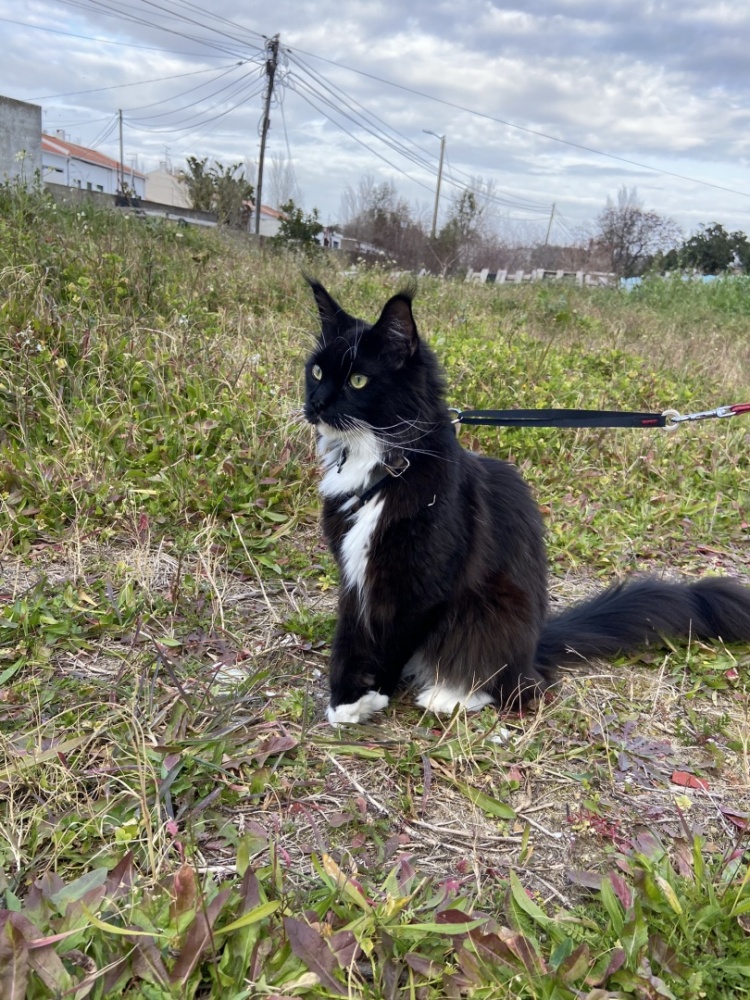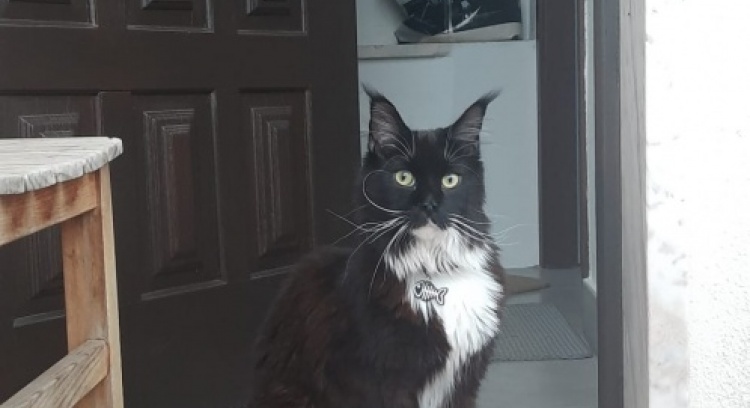Fuzzy is almost 2 years old and was born with a problem in the elbow of one paw. It was never a problem and he was always happy and playful but the worst happened and we discovered more problems that need interventions to have quality of life.
In 2021 we wanted to adopt a kitten and learned of a breeder who had a litter of 2 kittens with a problem with one of their paws. That's where we met Fuzzy.
He was born in July 2021 with a problem with the elbow of his right paw: he has no joint preventing him from using his paw at 100%. The story we were told told us that he would never have any problems, just that this paw did not stretch and shrink like the others, but it did not prevent him from having a normal life. It was important that this did not cause him any suffering and that he had quality of life, as if there were problems associated with the paw, we might not have the financial capacity to be able to treat it. As we were told that it would only be an aesthetic problem, we decided to adopt it, but it was not true.
In the first visits to the vet we discovered that in addition to the problem with the paw, he also had the herpesvirus and a deformation in the nasal passages that does not allow him to have a normal appetite and it is a problem to gain weight.
We were always able to manage the problems associated with his pathologies and offer him the best possible care, but after 1 year and 10 months the worst happened.

1 month ago he started limping on one hind leg and we thought he was joking. At the vet they said it was just a bad way and they prescribed anti-inflammatory. After 10 days nothing improved and we decided to ask for a 2nd opinion where we were told that he had a dislocated kneecap. We were referred to orthopedics where an x-ray showed a grade 3 patella dislocation on the left paw and grade 2 on the right and hip dysplasia. We discovered that these pathologies can be hereditary, which confirmed that information was omitted when we adopted him. It was also explained to us that cats support 60% of their weight on their front paws, that is, in the case of Fuzzy with the limitation of the front paw, this weight had to be redistributed by the other 3 paws, bringing motor instability.
The orthopedist advised surgery on the grade 3 left kneecap, then on the grade 2 right kneecap and later on the hips. Each procedure needs 3 months of recovery, medication, follow-up appointments and exams, trauma risks, etc. each surgery costing around 1000€ plus travel, consultations, exams, medication, so in the end more than 4000€ with no guarantees that the surgeries would all go well and risking Fuzzy's mental health and also so much anesthesia.
With this we understand that we should seek another opinion as we were not sure that it would be the best to go ahead with so much surgery both for financial reasons and for the risk that it could bring to Fuzzy.
It was in this search that we found an integrative medicine veterinary clinic that fortunately showed us a different perspective of Fuzzy's pathologies, looking at them as a whole and not as isolated cases, managing to relate them to each other. In this clinic, after analyzing new tests, the doctor concluded that Fuzzy has always felt pain due to various inflammations that he has mainly in his elbow and hips. We were then advised to place gold implants to treat the hips and elbow, which would serve to reduce inflammation, pain and the degenerative action of bones and tissues and ozone therapy to oxygenate the muscles atrophied by lack of movement. Specific blood analyzes were also prescribed for suspected lack of some nutrients due to the great inflammation present and lack of bone density noted in radiological exams.
We decided that this would be the way to go because it is not an invasive procedure and in one go we would be able to treat several points of the pathologies, remove pain, recover energy and appetite that Fuzzy has very little. We have already started the procedure but we are unable to pay for future treatment and follow-up, thus asking for your help to settle our debt at the clinic and provide possibilities to continue the follow-up in this initial phase.
We've already put in the implants and it's already possible to notice the improvements that we've been told about, like more mobility and disposition, he's already playing more and he already wants to go for a run!

